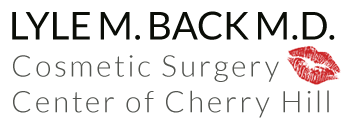Get A More Shapely Looking Figure With A Breast Lift!
Many women experience a loss of volume and shape to the breasts after having children, losing weight, or getting a little older. The breasts can look “deflated”, empty, and droopy. Stretch marks might also appear. All this is a result of a diminished amount of breast tissue and fat within the breasts. Simultaneously, the skin that is supposed to be supporting everything may have lost a good deal of its power and elastic tone. Clothes don’t fit right, neither do bras, forget about bathing suits. The average age of a woman experiencing these issues and seeking a breast lift? You might be surprised – it’s between 35 and 45.
Why a breast lift? Only with a breast lift (called a “mastopexy”) can a plastic surgeon really provide a truly restored, reshaped and lifted look to the breasts. A mastopexy procedure is directed toward (1) eliminating as much sagginess of the breasts as possible, (2) creating a rounder, fuller and more youthful appearance to the breasts, (3) creating overall better symmetry between the breasts, (4) resizing (if necessary) and re-centralizing (always!) the nipple/areola complexes on the breasts up where they belong, and (5) lifting the breast to a higher, more perky position on the chest. Clothes fit better, bathing suit shopping can be fun again, and the bathroom mirror may return as a friend.
Nevertheless, in some situations, the use of breast implants might actually help to achieve at least some of these goals fairly well and without the need for a mastopexy,which is definitely a more complex and involved procedure. An implant would also be desirable where an increase in cup size is wanted. But although an implant can create a fuller look to the breast, it does not really “lift” the breast. Some surgeons will therefore recommend that both a lift and an implant augmentation be considered. During your consultation with your board certified plastic surgeon, the various options involving implants should be thoroughly explored. Regardless, the fact remains that the droopier the breast is, the more a true lift from a mastopexy will be needed. Most implant operations require nothing more than one fairly tiny, inconspicuous incision. In contrast, most mastopexies involve much more significant incisions, have different risks, take longer and are more expensive. Overall, the differences between these two procedures are great, so the decision as to which is the best way to go is quite important. The bottom line is that the procedure must be the right one for you. The procedure of choice will be the one which exposes you to the least number of risks while also representing the most likely method to satisfy your expectations to the greatest degree possible.
When a mastopexy is performed, it is almost like a face lift for the breasts. Extra, sagging skin is removed in a very sophisticated manner as the reshaping and lifting of the breasts takes place. The incisions are designed to keep them generally hidden in the natural folds and creases around the breasts, making the resulting scars more difficult to see. The nipple/areola nerve connections are carefully protected and preserved as the complexes are restored from their hanging-like locations at the bottom of the breasts to their rightful, centered positions “looking straight out”. Although there are several types of mastopexies, the one most commonly performed is the inverted “T” or “anchor” type which directs all the lifting from the bottom up, almost the same way a “wonder bra” works. The only difference is that the breasts end up looking like they are in a wonder bra without the bra! Many patients also comment that they feel as if they have implants after a mastopexy because the reshaping has improved their contours to such a lovely degree.
What about the situation where the breasts are drooping but are larger than desired? During the mastopexy, the breasts can also be resized smaller, and made more symmetrical if one side is bigger than the other to start. It’s the same overall operation, just with more removed. Any tissue removed from the breasts is always sent for microscopic examination just for the rare chance that something not picked up by examination or mammogram could be caught.
Mastopexies are often combined with associated procedures. A favorite choice is liposuction for the areas along the sides of the chest and the bra-line/back areas where fat can sometimes settle in, creating unattractive bulges around the bra straps. Another spot like this is in the front where fat can create a “poofy” bulge under the front bra strap near the armpit. Of course, other areas, such as the abdomen or hips can be addressed with liposuction as well.
The recovery from a mastopexy is simpler than you might think. A week or less is all most women need before resuming most normal activities. Typically, mostly absorbable sutures are used and a special bra is the only “dressing”.
Dr. Lyle Back is originally from New York City, receiving his medical and surgical training at Rutgers Medical School, Cooper Hospital – University Medical Center, and Ohio State. He is Board Certified in General Surgery (ABS) and Plastic Surgery (ABPS). He is a Fellow of the American College of Surgeons (ACS), the American Academy of Cosmetic Surgery (AACS), and a longstanding member of the premier American Society of Plastic Surgeons (ASPS). He served as a Professor of Plastic Surgery at Temple University and St. Christopher’s Hospital for Children and performed reconstructive surgery with “Operation Smile” in Vietnam. He specializes in the full range of the most modern and state of the art cosmetic surgery procedures for the breasts and non-surgical cosmetic enhancement techniques available today.
